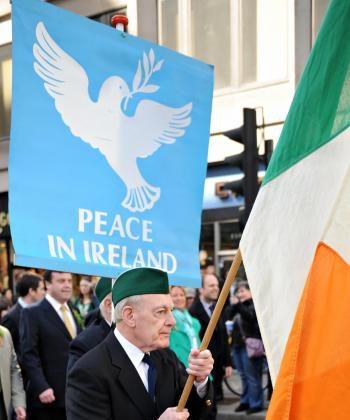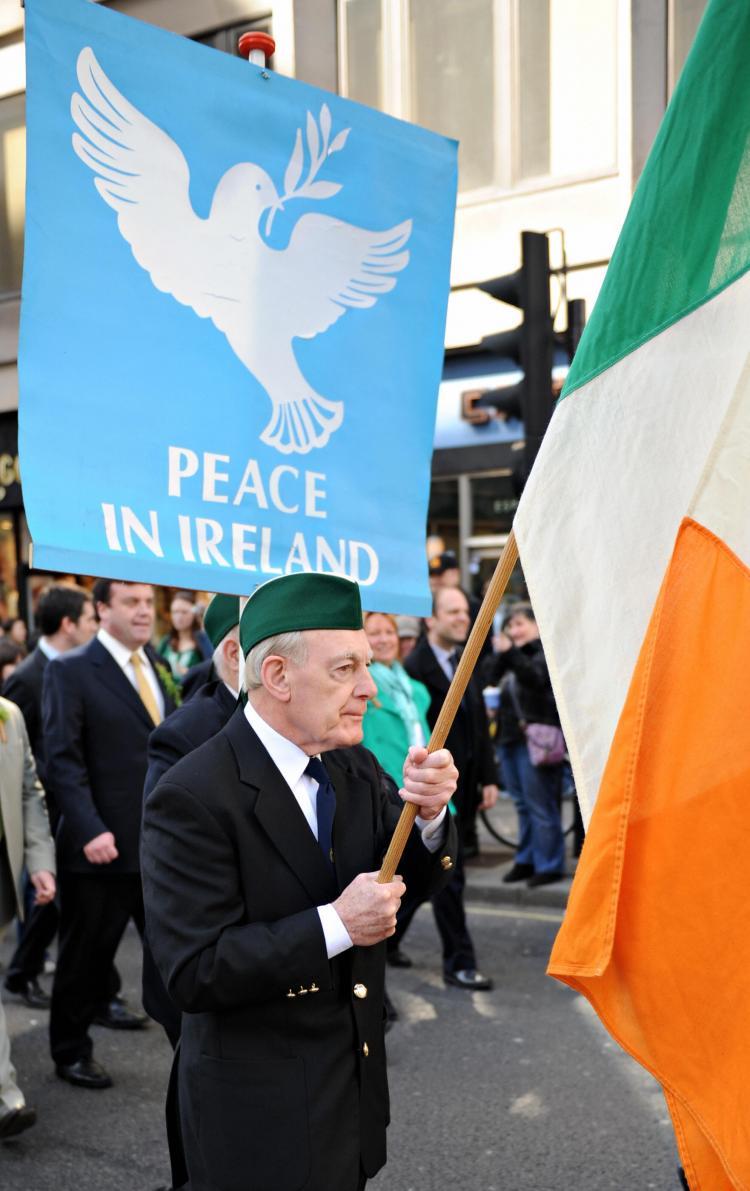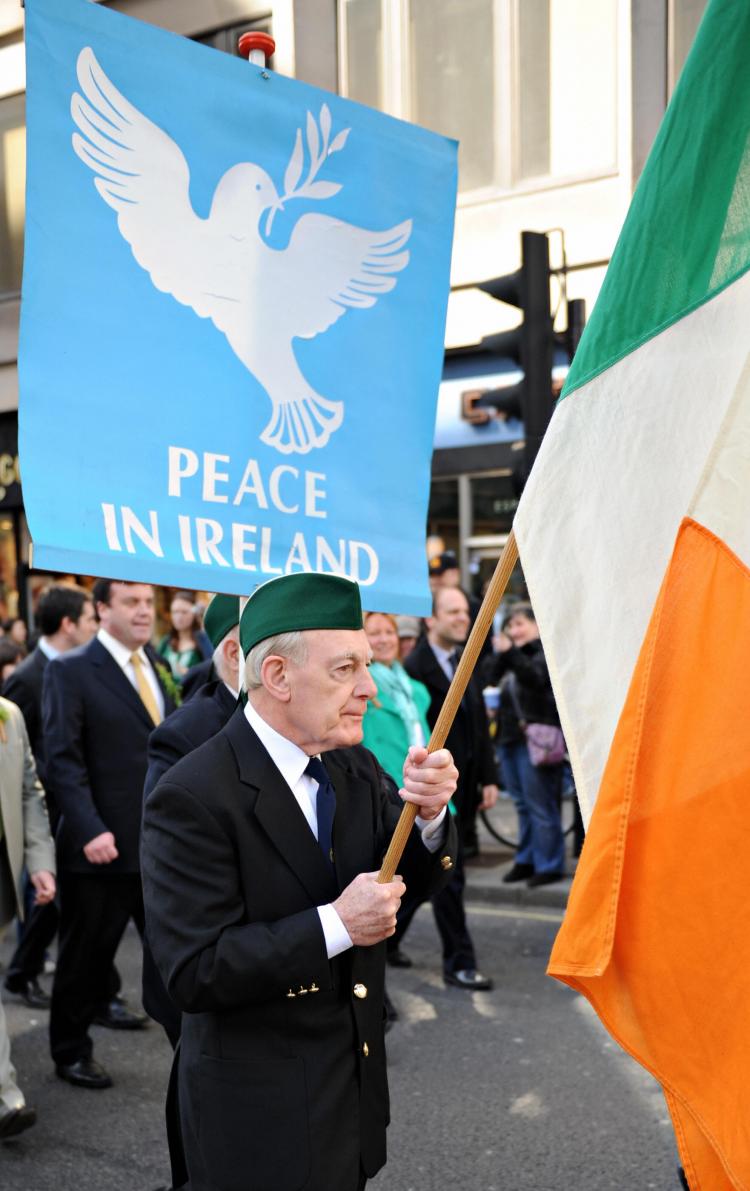As the Irish around the world celebrate St. Patrick’s Day (March 17th) they will be joined by Irish government ministers who are travelling to the four corners of the globe to celebrate Ireland’s national day.
Taoiseach (Irish Premier) Brian Cowan said in a statement, “Ireland’s future prosperity depends on nurturing our priceless connections and on developing the international trade and investment opportunities which will help us to return to strong economic growth. St Patrick’s day provides us with the unparalleled opportunity to achieve this.”
Opposition party Fine Gael Senator Jerry Buttimer said, “It is important that Ministers [travelling abroad] are accountable for their overseas travel. In this time of economic recession, it is essential to ensure that the message that Ireland is open for business, has an educated and competent workforce that is ready and willing to work, is clearly conveyed. It is equally important, in light of the recent events in the North, to communicate to the world that we are a united people committed to a peaceful Ireland.”
In the last few weeks in Northern Ireland two soldiers and one policeman were killed in terrorist attacks that were allegedly carried out in the name of uniting Ireland north and south. However, the groups that carried out these attacks were rejected by the electorate in Northern Ireland during elections a few years ago.
The main political parties that were chosen by the electorate at the time were Sinn Féin and the Democratic Unionist Party. Leaders from these two political groupings, who are now partners in government, travelled to the U.S. to celebrate St. Patrick’s day with the Irish diaspora and to encourage investment in Northern Ireland.
The trip has been very successful with the Northern Ireland politicians confirming significant investment from the U.S. in the region. Deputy First Minister Martin McGuinness said in New York on March 16, “This investment represents the ordinary people of New York State making an investment in the ordinary people of the North of Ireland and is designed to tackle deprivation and generate wealth for investors and communities alike.”
He added, “As myself and the First Minister near the end of our visit to the United States, it is especially welcome that we have such a concrete positive announcement but I am hopeful, and indeed confident, that it will not be the only positive news to emerge as the result of our visit here.”
It is significant that on St. Patrick’s day the politicians who were elected to represent their communities in Northern Ireland can successfully work together to bring prosperity to the region. This in itself is a reason to celebrate.
St. Patrick was kidnapped from his home in France as a boy and ended up as a slave in Northern Ireland. Celebrations are held worldwide in his honour mainly because of Ireland’s immigrant populations in other countries. The Taoiseach said, “St. Patrick’s day gives us the opportunity to recognize the contribution of our immigrant communities around the world. Many Irish people were forced to leave home by economic conditions far worse than anything we are experiencing today, many of them helped us when we were down and we should never forget or ignore them. In this regard other colleagues traveling to the US will be drawing particular attention to the undocumented Irish there.”
St. Patrick spent six years as a slave tending sheep on the lonely mountains of Slemish Mountain in Antrim before he made good his escape. In later years when he returned to Ireland as appointed Bishop for the country he was instrumental in abolishing slavery.
Would St. Patrick have approved of the government ministers traveling abroad in his honor? Well, he certainly believed in traveling himself. He continually traveled around Ireland and on the continent. In fact it was on one of his journeys back from Rome that he had a dream—a dream where he saw a man coming towards him with letters. When St. Patrick opened the letters it was as if all the Irish were calling to him with one voice to return. Where previous missionaries to Ireland had been swiftly ejected St. Patrick succeeded in converting the Irish to Christianity.
St. Patrick in his missionary role arrived back in Ireland on the eve of Beltine (Beltine is an old Irish pagan festival). During the festival no one could light a fire until the ritual fire at Tara (ancestrial home of Irish Kings) had been lit. St Patrick lit a fire on the hill opposite the Hill of Slane which brought him to the immediate attention of the Irish nobility. He used this audience with the Irish nobility to start his ministry, using the shamrock to explain the Holy Trinity.
There are letters in existence in Ireland dating from the 5th century written in St. Patrick’s hand which showed him to have been a warm compassionate man who was not afraid to speak his mind.
Taoiseach (Irish Premier) Brian Cowan said in a statement, “Ireland’s future prosperity depends on nurturing our priceless connections and on developing the international trade and investment opportunities which will help us to return to strong economic growth. St Patrick’s day provides us with the unparalleled opportunity to achieve this.”
Opposition party Fine Gael Senator Jerry Buttimer said, “It is important that Ministers [travelling abroad] are accountable for their overseas travel. In this time of economic recession, it is essential to ensure that the message that Ireland is open for business, has an educated and competent workforce that is ready and willing to work, is clearly conveyed. It is equally important, in light of the recent events in the North, to communicate to the world that we are a united people committed to a peaceful Ireland.”
In the last few weeks in Northern Ireland two soldiers and one policeman were killed in terrorist attacks that were allegedly carried out in the name of uniting Ireland north and south. However, the groups that carried out these attacks were rejected by the electorate in Northern Ireland during elections a few years ago.
The main political parties that were chosen by the electorate at the time were Sinn Féin and the Democratic Unionist Party. Leaders from these two political groupings, who are now partners in government, travelled to the U.S. to celebrate St. Patrick’s day with the Irish diaspora and to encourage investment in Northern Ireland.
The trip has been very successful with the Northern Ireland politicians confirming significant investment from the U.S. in the region. Deputy First Minister Martin McGuinness said in New York on March 16, “This investment represents the ordinary people of New York State making an investment in the ordinary people of the North of Ireland and is designed to tackle deprivation and generate wealth for investors and communities alike.”
He added, “As myself and the First Minister near the end of our visit to the United States, it is especially welcome that we have such a concrete positive announcement but I am hopeful, and indeed confident, that it will not be the only positive news to emerge as the result of our visit here.”
It is significant that on St. Patrick’s day the politicians who were elected to represent their communities in Northern Ireland can successfully work together to bring prosperity to the region. This in itself is a reason to celebrate.
St. Patrick was kidnapped from his home in France as a boy and ended up as a slave in Northern Ireland. Celebrations are held worldwide in his honour mainly because of Ireland’s immigrant populations in other countries. The Taoiseach said, “St. Patrick’s day gives us the opportunity to recognize the contribution of our immigrant communities around the world. Many Irish people were forced to leave home by economic conditions far worse than anything we are experiencing today, many of them helped us when we were down and we should never forget or ignore them. In this regard other colleagues traveling to the US will be drawing particular attention to the undocumented Irish there.”
St. Patrick spent six years as a slave tending sheep on the lonely mountains of Slemish Mountain in Antrim before he made good his escape. In later years when he returned to Ireland as appointed Bishop for the country he was instrumental in abolishing slavery.
Would St. Patrick have approved of the government ministers traveling abroad in his honor? Well, he certainly believed in traveling himself. He continually traveled around Ireland and on the continent. In fact it was on one of his journeys back from Rome that he had a dream—a dream where he saw a man coming towards him with letters. When St. Patrick opened the letters it was as if all the Irish were calling to him with one voice to return. Where previous missionaries to Ireland had been swiftly ejected St. Patrick succeeded in converting the Irish to Christianity.
St. Patrick in his missionary role arrived back in Ireland on the eve of Beltine (Beltine is an old Irish pagan festival). During the festival no one could light a fire until the ritual fire at Tara (ancestrial home of Irish Kings) had been lit. St Patrick lit a fire on the hill opposite the Hill of Slane which brought him to the immediate attention of the Irish nobility. He used this audience with the Irish nobility to start his ministry, using the shamrock to explain the Holy Trinity.
There are letters in existence in Ireland dating from the 5th century written in St. Patrick’s hand which showed him to have been a warm compassionate man who was not afraid to speak his mind.





Friends Read Free